Key Takeaways
- Earwigs do not crawl into human ears or burrow into the brain.
- Their name comes from old myths and has no scientific basis.
- Earwigs prefer moist environments like gardens and mulch.
- They are harmless to humans and do not spread diseases.
- Prevent earwigs by reducing moisture and sealing entry points.
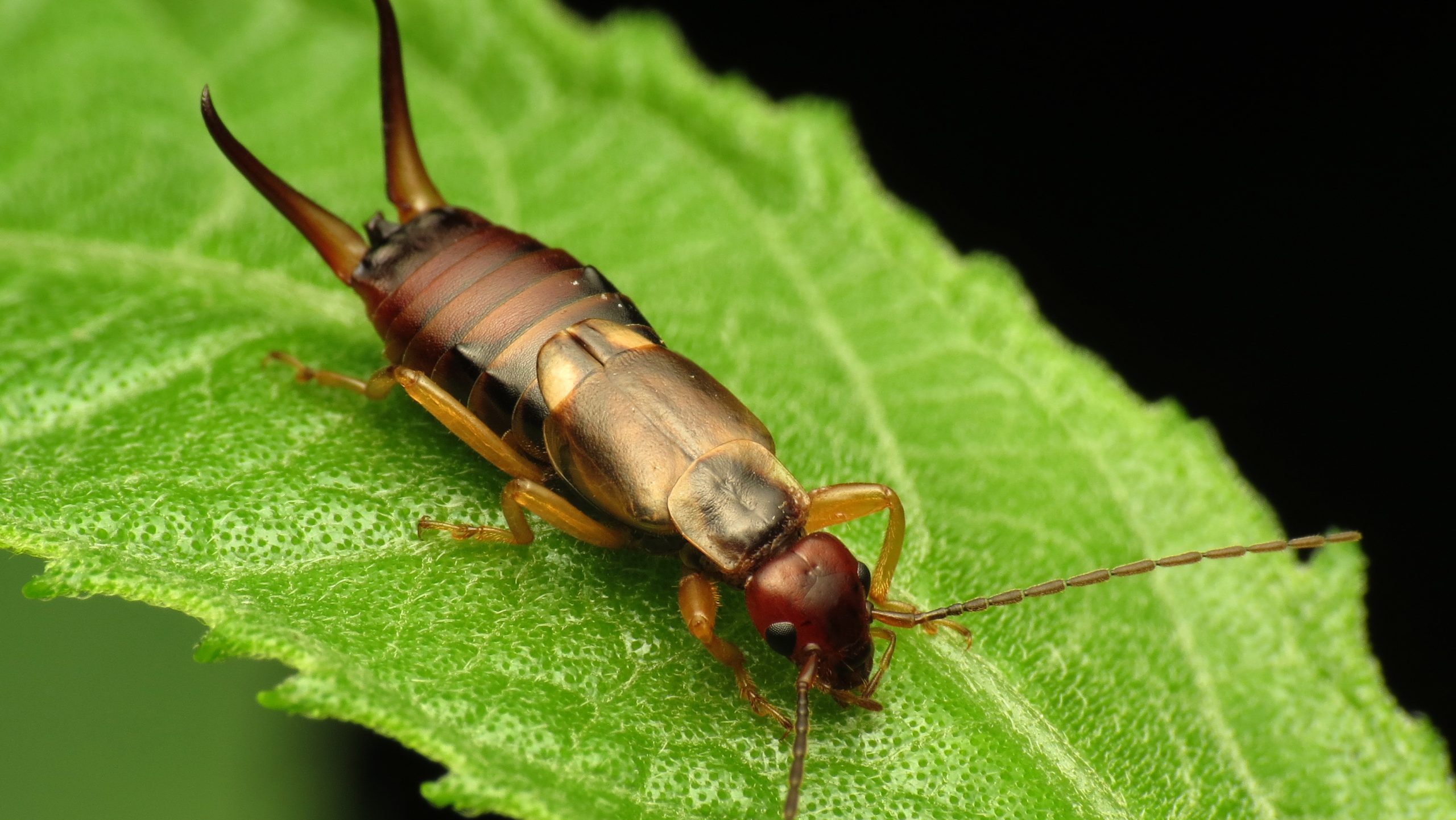 Earwigs have long been linked to an unsettling myth: that they crawl into people’s ears while they sleep, burrow into the brain, and lay eggs. This widespread belief has terrified homeowners for generations. But is there any truth to it?
The short answer: No, earwigs do not seek out human ears, nor do they burrow into brains. In reality, earwigs are harmless insects that prefer moist, dark environments and have no interest in humans.
Still feeling uneasy about earwigs in your home? Schedule your Free Pest Inspection Today. Our experts will put your mind at ease by ensuring your home stays pest-free.
Earwigs have long been linked to an unsettling myth: that they crawl into people’s ears while they sleep, burrow into the brain, and lay eggs. This widespread belief has terrified homeowners for generations. But is there any truth to it?
The short answer: No, earwigs do not seek out human ears, nor do they burrow into brains. In reality, earwigs are harmless insects that prefer moist, dark environments and have no interest in humans.
Still feeling uneasy about earwigs in your home? Schedule your Free Pest Inspection Today. Our experts will put your mind at ease by ensuring your home stays pest-free.
What Are Earwigs?
Earwigs are small insects characterized by their elongated bodies and distinctive pincers (cerci) at their rear ends. These pincers are primarily used for defense and capturing prey. Earwigs range in size from about ¼ inch to 1 inch long and typically have a brownish to black coloration. Despite common myths, earwigs do not crawl into human ears; their name originates from this old, unfounded belief.Why Are They Called “Earwigs”?
| Myth | Fact |
|---|---|
| Earwigs intentionally crawl into human ears to lay eggs. | This is a myth! The name “earwig” originates from old folklore, not scientific evidence. |
| Earwigs burrow into the brain if they enter the ear. | Earwigs prefer dark, damp environments like soil and mulch, not human ears. |
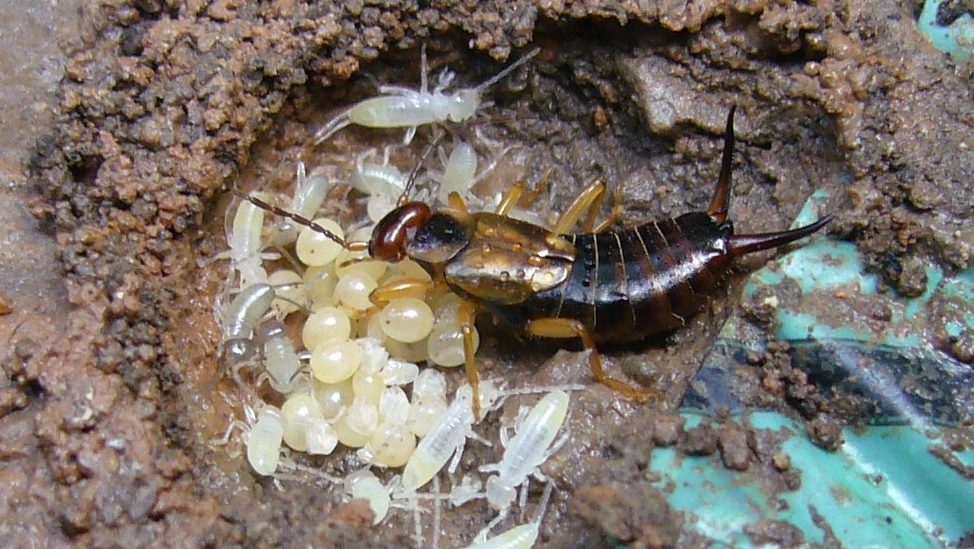

Not getting a solution?
Get your free pest control estimate today!Do Earwigs Actually Crawl Into Human Ears?
While it is technically possible for any small insect to accidentally enter a person’s ear, earwigs do not seek out human ears. They prefer damp environments, decaying plant matter, and crevices in soil. The fear of an earwig burrowing into the brain is completely unfounded.Earwigs Behavior & Characteristics
-
Diet: Earwigs primarily feed on decaying plant matter, fungi, and small insects, making them beneficial for gardens.
-
Habitat: They are attracted to moisture and tend to live in gardens, flowerbeds, and shaded outdoor spaces. Indoors, they may be found in bathrooms, basements, and crawl spaces.
-
Pincers (Cerci): Earwigs have intimidating-looking pincers, which they use for defense and mating, not for harming humans.
-
Reproduction: Female earwigs lay eggs in the soil and protect their young—an uncommon behavior among insects.
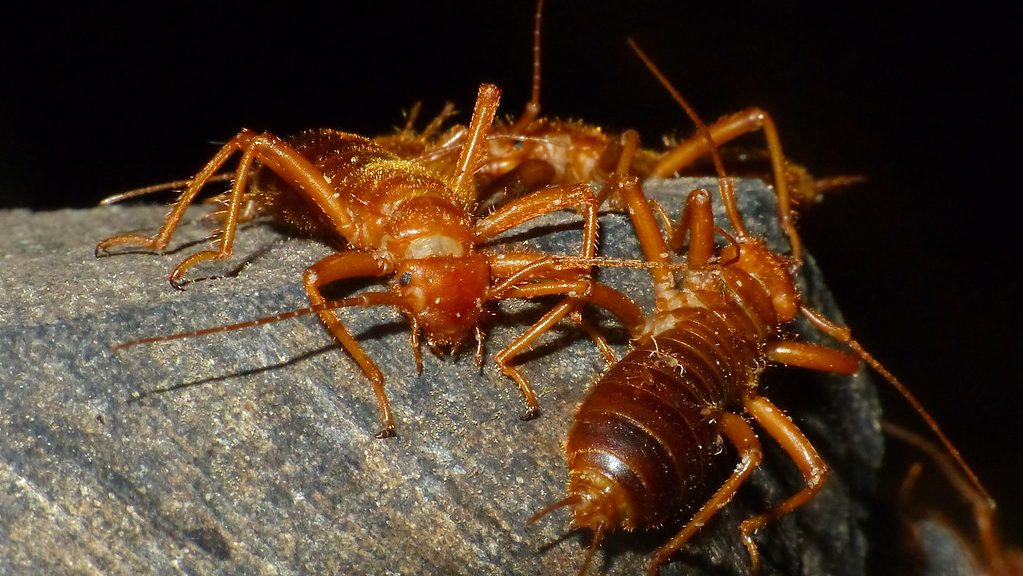
Signs of Earwig Infestation
Recognizing an earwig infestation early can help you manage the problem effectively. Common signs include:- Sightings of earwigs in damp areas such as bathrooms, kitchens, or basements.
- Small, irregular holes in plants, indicating earwig feeding.
- Earwigs hiding under pots, damp newspapers, or garden debris around your home.
Are Earwigs Harmful to Humans?
No, earwigs do not pose a danger to humans. They do not sting, transmit diseases, or cause structural damage. At worst, they may pinch if handled, but they are not aggressive and prefer to avoid human contact.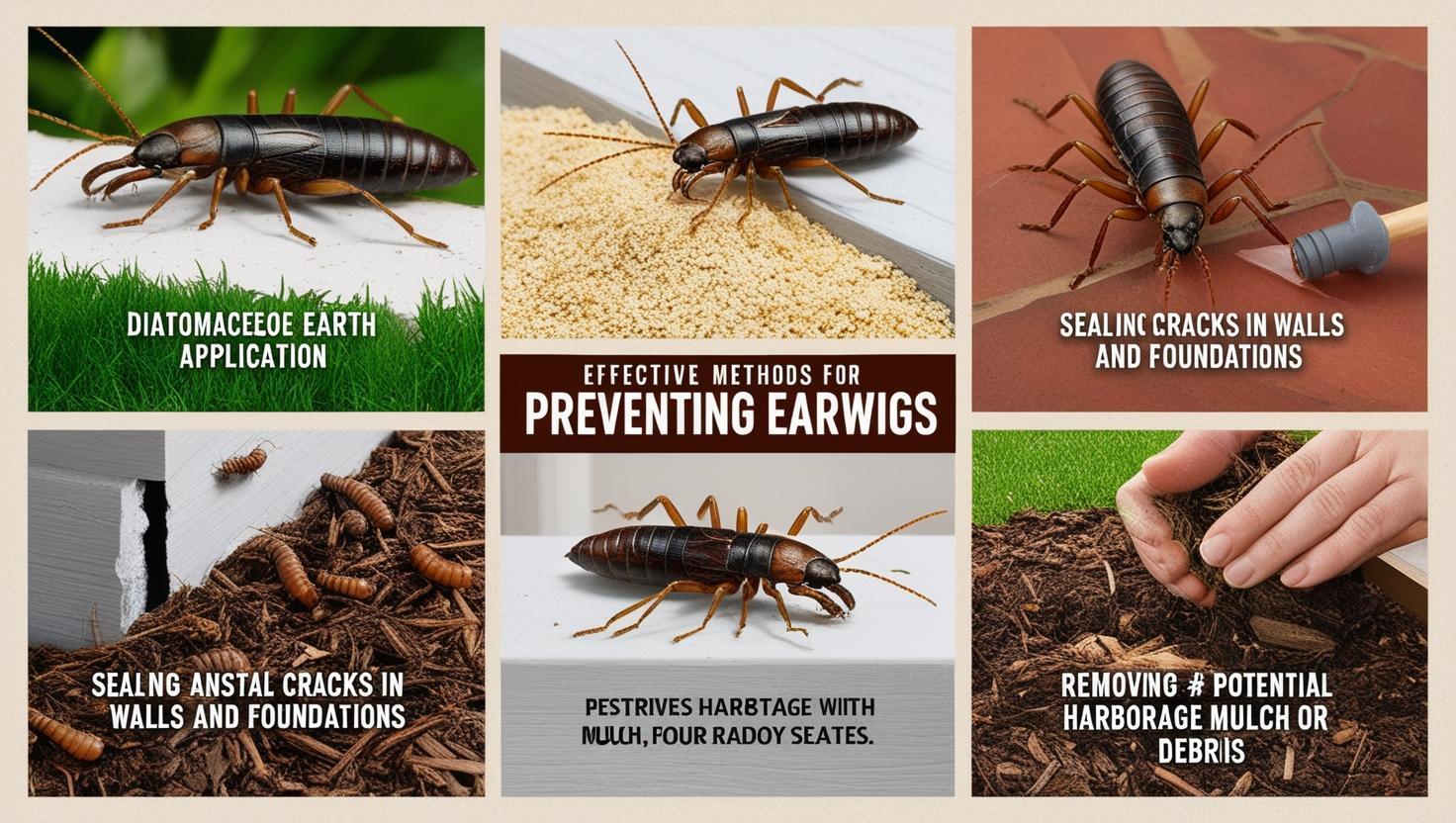
How to Keep Earwigs Out of Your Home
-
Fix Leaky Pipes and Faucets: Eliminate moisture buildup by repairing leaks in sinks, bathrooms, and basements.
-
Use a Dehumidifier: Control humidity levels in damp areas like basements and crawl spaces with a dehumidifier.
-
Ensure Proper Drainage: Improve drainage around your home to prevent water from pooling near the foundation.
-
Seal Cracks and Gaps: Apply caulk around windows, doors, and foundation gaps to prevent earwig entry.
-
Install Door Sweeps and Screens: Block entry points by securing screens and using door sweeps on exterior entrances.
-
Keep Yard Debris Away: Maintain a clean yard—keep mulch, firewood, and leaves away from your home’s foundation.
-
Trim Overgrown Vegetation: Reduce damp hiding spots by cutting back shrubs and overgrown plants near your home.
-
Set DIY Traps: Place damp rolled newspapers or soy sauce and oil traps overnight to capture earwigs.
-
Use Diatomaceous Earth: Sprinkle food-grade diatomaceous earth around entry points as a natural deterrent.
-
Apply Essential Oils: Use lavender, citrus, or peppermint oil near doors and windows to repel earwigs.
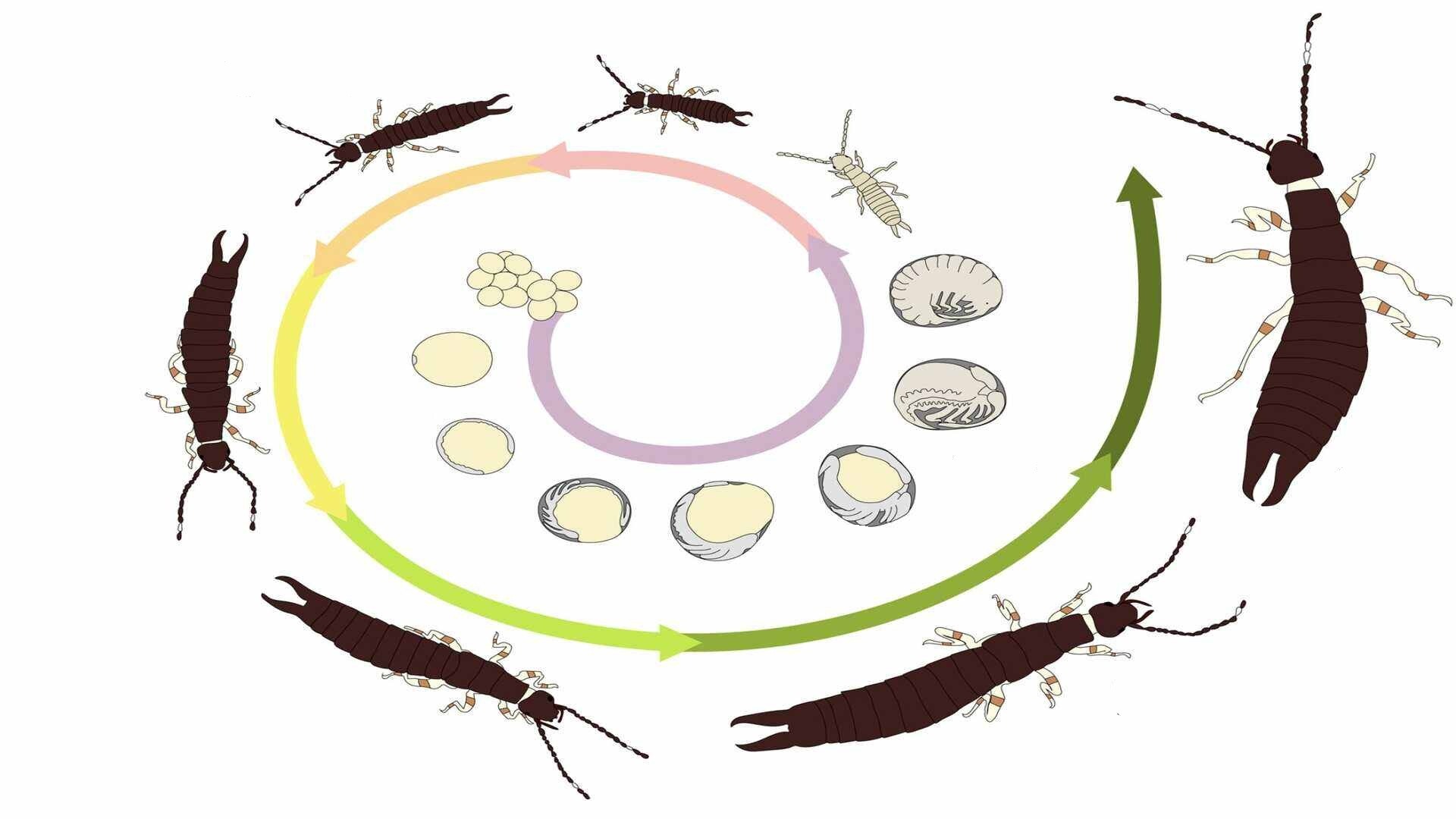
What to Do If a Bug Gets Stuck in Your Ear
Though earwigs do not actively seek human ears, any small insect can accidentally enter an ear canal. If this happens, follow these steps:Steps to Remove a Bug from Your Ear
-
Stay Calm: Avoid panicking, as sudden movements can worsen the situation and make the insect go deeper.
-
Tilt Your Head: Turn the affected ear downward to let gravity assist in dislodging and encouraging the bug to crawl or fall out.
-
Do Not Use Cotton Swabs or Tweezers: Avoid inserting objects into the ear as they can push the insect further or cause injury.
-
Use Oil or Warm Water: A few drops of mineral oil, baby oil, or warm water can help suffocate or flush out the bug safely.
-
Seek Medical Assistance: If the bug doesn’t come out easily, visit a healthcare provider for professional removal.





